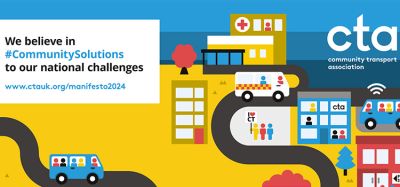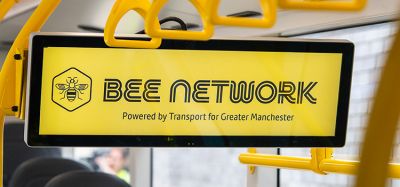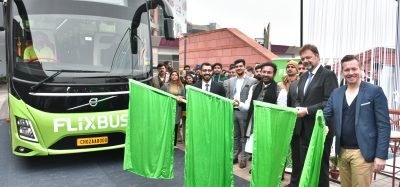Using ITS to support intermodality and multimodality
- Like
- Digg
- Del
- Tumblr
- VKontakte
- Buffer
- Love This
- Odnoklassniki
- Meneame
- Blogger
- Amazon
- Yahoo Mail
- Gmail
- AOL
- Newsvine
- HackerNews
- Evernote
- MySpace
- Mail.ru
- Viadeo
- Line
- Comments
- Yummly
- SMS
- Viber
- Telegram
- Subscribe
- Skype
- Facebook Messenger
- Kakao
- LiveJournal
- Yammer
- Edgar
- Fintel
- Mix
- Instapaper
- Copy Link
Posted: 30 June 2008 | Martin Arndt, Technical Officer, ETSI TC ITS | No comments yet
ETSI, the world-renowned Standards Development Organisation (SDO) produces global standards for fixed, mobile, radio, converged, broadcast and Internet technologies, and in 2007 created the Technical Committee “TC ITS” dedicated to supporting the transport sector through Intelligent Transport Systems (ITS).
ITS comprises service groups and service domains resulting in the provision of ITS services which are designed to improve the safety, reliability, efficiency and quality of transport service provision – and its enjoyment.
ETSI, the world-renowned Standards Development Organisation (SDO) produces global standards for fixed, mobile, radio, converged, broadcast and Internet technologies, and in 2007 created the Technical Committee “TC ITS” dedicated to supporting the transport sector through Intelligent Transport Systems (ITS). ITS comprises service groups and service domains resulting in the provision of ITS services which are designed to improve the safety, reliability, efficiency and quality of transport service provision – and its enjoyment.
ETSI, the world-renowned Standards Development Organisation (SDO) produces global standards for fixed, mobile, radio, converged, broadcast and Internet technologies, and in 2007 created the Technical Committee “TC ITS” dedicated to supporting the transport sector through Intelligent Transport Systems (ITS). ITS comprises service groups and service domains resulting in the provision of ITS services which are designed to improve the safety, reliability, efficiency and quality of transport service provision – and its enjoyment.
Much of the emphasis of ITS service provision lies within the road transport sector. However, transport intermodality and multimodality are becoming increasingly important. For example, the use of multiple modes of transport to make a journey following the sequence: car → park & ride → train → metro, or the use of multiple modes of transport to effect a logistics movement, as in the supply chain: item → pallet → truck → rail → ship → truck → delivery. Two aspects of this large field of applications are currently of particular interest: the improvement of safety in general and the reduction of road deaths and injuries in particular (in Europe 40,000+ road deaths per year and over 1.25 million injuries), and the efficient use of transport systems to decrease pollution emissions such as CO2. The provision of ITS services involves communications such as backbone system telecommunications and wireless communications with and between vehicles.
The decision in 2007 to merge all ETSI transport work and to create a Technical Committee dedicated to standards for ITS means the development and maintenance of standards, specifications and other deliverables to support the development and implementation of ITS Service provision across the network, for transport networks, vehicles and transport users, including interface aspects and multiple modes of transport and interoperability between systems, can now happen in one meeting place – enabling the publication of European Standards and acting as a catalyst for Industry progression. Work carried out by ETSI TC ITS is organised through Working Groups (WGs) which focus on communication media and the associated physical, transport, network and security layers, and the provision of generic web services.
Working Group 1 (WG 1): ‘User and Application Requirements’ acquires user and application requirements with input from the automobile and equipment supply sectors, national transport administrations, road operators and European R&D projects. This WG manages the presentation of requirements to other Working Groups as working assumptions.
Working Group 2 (WG 2): ‘Architecture, Cross Layer and Web Services’ develops the overall architecture and addresses cross (OSI) layer issues.
Working Group 3 (WG 3): ‘Transport and Network’ develops standards and specifications regarding the transport and network layer and generic web services to support ITS service provision.
Working Group 4 (WG 4): ‘Media and Medium Related’ has sub-groups for each of the media, including a group to handle Electronic Fee Collection (EFC) issues and a group to manage radio matters that require cooperation with other ETSI Technical Committees such as TC ERM.
Working Group 5 (WG 5): ‘Security’ addresses security and Lawful Interception (LI) issues in cooperation with other ETSI Technical Committees such as ETSI TC LI.
Currently, ITS standardisation touches ‘vehicle-to-vehicle’, ‘vehicle-to-roadside’, and ‘roadside-to-vehicle’ communications, Electronic Fee Collection (EFC) and interoperability. A final draft harmonised standard for vehicular communications systems operating in the 5.8 GHz frequency band (draft ETSI EN 302 571) is due for publication, providing the regulatory certainty for placing such systems on the EU market and work has started on the elaboration of standards dealing with the corresponding network architecture, protocols and transmission formats. In addition, other work items aim at preserving vehicular communications from feeding systems with malicious information as this may lead to road users becoming reluctant to accept such systems in vehicles. An ETSI Specialist Task Force (STF) was recently created to investigate the most practical and user-friendly means of providing road users with retrieved information. Once such systems are widely available, vehicular communications are destined to help prevent road accidents and improve traffic fluidity. Several objectives of European initiatives such as eSafety and i2010 are addressed via these systems. Interoperability of vehicular communications systems is a key factor for meeting the objectives of such initiatives. Consequently, ETSI is committed to engaging in monitoring and organising PlugtestsTM for all interested parties.
Such interoperability events provide the neutral environment to check and verify interoperability across different implementors, i.e. manufacturers of vehicles and roadside units which deploy vehicular communications systems. Regarding Electronic Fee Collection (EFC), it is expected that Dedicated Short Range Communications (DSRC) in the 5.8 GHz frequency band will be one of the technical pillars of the European Electronic Toll Service (EETS) which aims to harmonise tolling across Europe. However, despite good progress having been made, it is not yet possible to pay the London congestion fee by a DSRC device which was designed, say, for French autoroutes. In fact, the reason for this delay is not of a technical nature but is due to different implementations of the network architecture above the radio communications layer. It is quite a challenge to harmonise these systems as they have already been operational for many years now. One possible solution could be the creation of a service provider to interface with road operators and manage the data flow. This would seem comparable to the SIM Card approach used for roaming in mobile networks. In any event, a unique and widely accepted identity, plus agreed data containers is required in order to get the idea of service providers running. A service provider approach would make DSRC-based systems interesting from a deployment aspect in other areas, where fees could be collected by electronic means, e.g. fees for parking and ferries, tickets for public transport like trains and buses, paying penalties on site.
An interesting topic for potential future activities is work on creating an interface between automotive systems. Car manufacturers install much equipment related to safety on vehicles and such systems hold information that could be used to create warning messages to other vehicles, e.g. through ‘vehicle-to-vehicle’ communication: for example, an Electronic Stability Control (ESC) knows prior to a crash that one may be about to happen, as it detects that the vehicle has gone beyond the limits of the car’s physical control and that it (the ESC) can no longer guarantee recovery from that condition in order to enable the driver to prevent a crash. It could, however, avert other road users to this lack of control and the ensuing possibility of a crash, eventually enabling the avoidance of an accident or at least minimising collateral damage through evasive action taken elsewhere. Anti-lock Braking Systems (ABS) are similarly aware of road conditions. Temperature sensors and automotive radar are present and can provide useful information. Since the on-board systems are complex and currently far from harmonisation (e.g. implementation of CAN and MOST bus systems) a harmonised and well-defined interface between the on-board system and the communications system would be very useful for getting safety-critical and safety-related information sent out from the vehicle in question, to inform other road users. Apart from the need for information to be processed quickly, such an interface needs to be secure, and the prevention of hacking into on-board systems remains a tough challenge. One thing is certain, ITS is at an exciting stage and promises much interest to all stakeholders in road user markets.
About ETSI
ETSI is a not-for-profit organisation based in Europe which produces global standards and specialises in interoperability and standards related issues. Its 700 member organisations benefit from direct participation and are drawn from 62 countries across five continents worldwide.
Related topics
Business Models, Fleet Management & Maintenance, Intelligent Transport Systems (ITS), Multimodality, Ticketing & Payments, Transport Governance & Policy
Issue
Issue 3 2008
Related organisations
European Telecommunications Standards Institute (ETSI)








